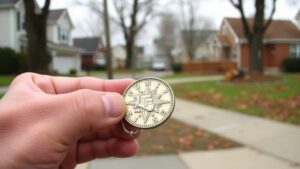Recovering Coins and Jewelry From Picnic Areas in National Parks
Recovering Coins and Jewelry From Picnic Areas in National Parks
Picnic areas in national parks are often vibrant spots where families and friends gather to enjoy nature and each others company. But, these areas can also harbor hidden treasures in the form of lost coins and jewelry. This article aims to explore the methods, legal considerations, and remediation practices involved in recovering these artifacts from picnic areas in national parks.
The Allure of Picnic Areas
Picnic areas serve as social hubs within national parks. With millions of visitors each year, these locations often become sites for family gatherings, celebrations, and outdoor meals. The casual environment can lead to unintentional loss of personal items including:
- Coins
- Rings
- Bracelets
- Watches
According to the National Park Service, over 327 million people visited national parks in 2021 alone, which indicates a significant probability for instances of lost valuables. The sheer volume of foot traffic can often lead to an underreported number of items lost over time.
Methods for Recovery
Recovering lost items from picnic areas requires the right tools and techniques. three most common methods include:
- Metal Detectors: Using a metal detector is one of the most practical ways to locate metallic items buried just beneath the surface. Detectors can vary from simple handheld models to more sophisticated devices capable of detecting different metals.
- Ground Penetrating Radar (GPR): For deeper or more unique searches, GPR can be employed. This technology sends radar pulses into the ground and analyzes the reflected signals, which can reveal the location of buried metallic objects.
- Excavation Techniques: Manual excavation, although labor-intensive, is sometimes necessary, particularly in areas where it is known that heavier items might have been lost. Using shovels, trowels, and more specialized digging tools allows searchers to explore areas thoroughly.
Each method has its own advantages and limitations. For example, while metal detectors can be effective for quick searches, they may fail in mineral-rich soil. Ground penetrating radar can be expensive and requires expertise, but it offers greater accuracy for deeper recoveries.
Legal Considerations
Before embarking on a treasure-hunting expedition in national parks, it is essential to understand the pertinent legal regulations:
- The Archaeological Resources Protection Act (ARPA): This act makes it illegal to excavate or disturb archaeological sites without a permit. potential discovery of historical items may complicate recovery efforts.
- National Park Service Policies: Most parks have strict policies regarding collecting items. Even lost items may technically belong to the park. Visitors are encouraged to turn in found items at park offices.
Failing to adhere to these regulations could result in hefty fines or criminal charges. It is critical to check specific park guidelines before beginning any recovery operation.
Case Studies: Successful Recoveries
There have been instances where dedicated searches in national parks have yielded valuable treasures. For example, a group of metal detecting enthusiasts found a trove of coins near a picnic area in Yellowstone National Park. The recovery not only included coins from the 1950s but also a rare collectible piece that appraised for several thousand dollars. This highlights the potential value of undertaking such endeavors.
Environmental Considerations
When conducting treasure recovery in national parks, it is vital to consider the environmental impact:
- Disturbance of soil can disrupt local ecosystems.
- Removal of found items may affect historical context.
Professionals recommend employing minimal disturbance techniques, ensuring that any recovery aligns with environmental stewardship
Conclusion: Actionable Takeaways
Recovering coins and jewelry from picnic areas in national parks can be a rewarding endeavor when approached responsibly. Those interested in treasure hunting should:
- Research local laws and national park regulations before starting.
- Use appropriate equipment to maximize recovery chances.
- Consider both the environmental and historical implications of recovery efforts.
By adhering to legal guidelines and employing respectful practices, enthusiasts can enjoy the thrill of discovery while contributing to the preservation of national parks.



